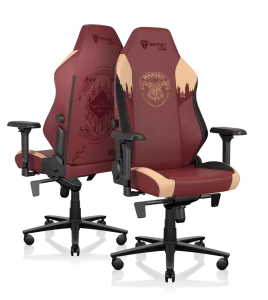“Yer a Wizard, Harry!”
In celebration of that famous declaration that took place on this very day 24 years ago, here’s to all those moments when being a wizard would have come in handy.
In celebration of that famous declaration that took place on this very day 24 years ago, here’s to all those moments when being a wizard would have come in handy.
Eight years ago today was the end of an era. Now, I’m reminiscing about my first time reading Book 7.
Good day to all you wonderful, magical folk. No matter when or where you read this, know that I am smiling fondly at the fact that you are reading my words.
For five days in Laconia, New Hampshire, on Memorial Day Weekend, Potter fans overran the Margate Resort in full cosplay during the bi-annual MISTI-Con. The sold out Margate was transformed into the Ministry of Magic headquarters with spectacular decorations, including posters/signs, trinkets, and more. The two of us (MuggleNet Creative Team members Amy and Lizzie) got to experience it all first hand.
Amidst the recent surfacing of a few artists’ depictions of superheroes and other popular characters as the opposite gender than what they are usually represented as, I began to think about what our beloved “Harry Potter” cast might look like if the genders were swapped.
Twenty years ago today the wizarding world suffered a tremendous loss in the form of Cedric Diggory’s murder. Cedric’s death was significant in the “Potter” series because it was the first time readers witnessed the death of a character that wasn’t minor and wasn’t just a fleeting mention. We were in that graveyard with Harry and Cedric, so his death was naturally more real to us than that of James and Lily’s. Cedric’s death was pivotal in shifting the series and its readers out of childhood and into the adult world.
Greetings to all you lovely people, and welcome to “Witch Weekly”’s “Who Wore It Better.” Draining as it is to talk about myself, I know public interest in my recent ventures into journalism is at its peak, so I will indulge my readers.
Because “Harry Potter” fans have come to learn that nothing J.K. Rowling writes is by chance, I embarked on this journey to look at the animal emblems of all four Hogwarts Houses. I wanted to find out how previously recorded legends, myths, and other symbolic systems mentioned these animals and how the nature of the animals in traditional symbolism reflected the House values in Rowling’s work. Gryffindor is an obvious connection between the symbol of a lion and bravery. I had to do a little more research when it came to the Ravenclaw eagle and the Hufflepuff badger, but there were interesting findings regarding those two animals and how they connected to their respective houses. For today’s post I’ll be concentrating on Slytherin House and its snake emblem.
Each of the Hogwarts Houses is associated with an animal emblem along with its colors. While the similarity between Gryffindor’s values and the bravery of lions is one of the more obvious connections when it comes to these mascots, I wanted to explore how all of the Houses’ traits are represented through the emblems they were assigned. I’ve already posted my research about Gryffindor’s lion and Ravenclaw’s eagle, so up next is Hufflepuff’s badger. I myself am a good old loyal Hufflepuff, so I will try to refrain from writing a novel about this fantastic house and its mighty badger.
2015
11-year-old Tom Riddle (HBP)
1993
1992
2017
1992
Percy Weasley
1992
1991
MuggleNet podcasts are sponsored in part by Secretlab.

Thanks to its research-backed ergonomic design, including a proprietary 4-way adaptive lumbar support system, the Secretlab TITAN Evo Harry Potter Edition will comfortably support you even when you’re up to no good.